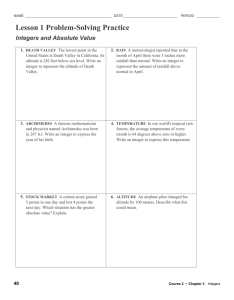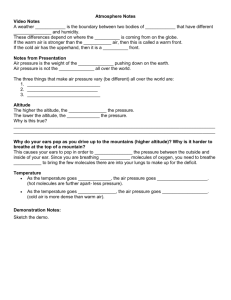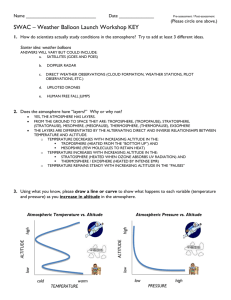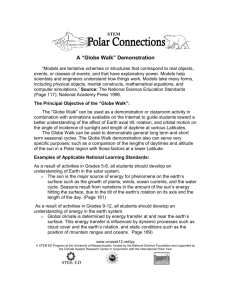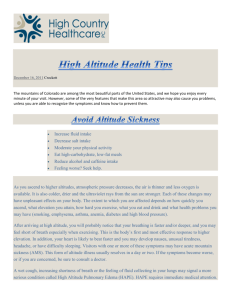Using an Astrolabe
advertisement
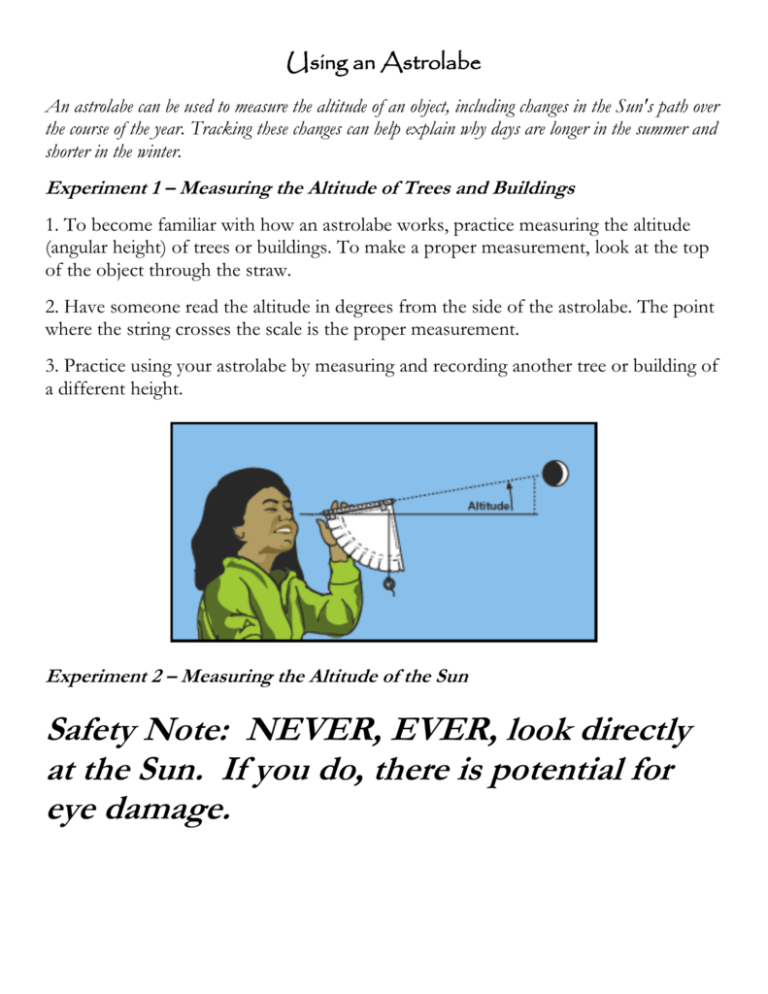
Using an Astrolabe An astrolabe can be used to measure the altitude of an object, including changes in the Sun's path over the course of the year. Tracking these changes can help explain why days are longer in the summer and shorter in the winter. Experiment 1 – Measuring the Altitude of Trees and Buildings 1. To become familiar with how an astrolabe works, practice measuring the altitude (angular height) of trees or buildings. To make a proper measurement, look at the top of the object through the straw. 2. Have someone read the altitude in degrees from the side of the astrolabe. The point where the string crosses the scale is the proper measurement. 3. Practice using your astrolabe by measuring and recording another tree or building of a different height. Experiment 2 – Measuring the Altitude of the Sun Safety Note: NEVER, EVER, look directly at the Sun. If you do, there is potential for eye damage. 1. Because it is harmful to look directly at the Sun, a new method for measuring the Sun's altitude must be used. Hold the astrolabe so that the straw points in the direction of the Sun. Do not look through the straw. 2. Aim the straw so that you see the shadow of the straw on your hand. Move the straw slightly until a small circle of light forms on your hand. The straw is now pointing directly at the Sun. 3. Ask someone to read the Sun's altitude (in degrees) where the string crosses the scale. Take note of the time of day the reading was made. 4. Ask someone to read the Sun's altitude (in degrees) where the string crosses the scale. Take note of the time of day the reading was made. 5. One day a week, at the same time each day, measure the altitude of the Sun with your astrolabe. Make three consecutive measurements and record them in the chart provided. Be sure to include the date. 6. As the weeks progress, look at your measurements of the Sun's altitude. Can you detect a change? Is the altitude increasing or decreasing? Is there a pattern of change? How can you explain these changes?




